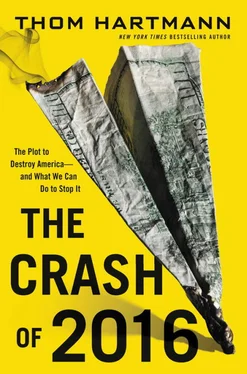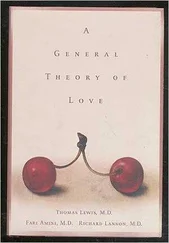As Jon Ronson, author of The Psychopath Test: A Journey Through the Madness Industry , told Forbes writer Jeff Bercovici, for Bercovici’s article titled “Why (Some) Psychopaths Make Great CEOs,” Chainsaw Al “effortlessly turns the psychopath checklist into ‘Who Moved My Cheese?’ Many items on the checklist he redefines into a manual of how to do well in capitalism.” 92
The reason psychopaths were making hundreds of millions of dollars in the executive boardroom, Ronson said, was because “the way that capitalism is structured really is a physical manifestation of the brain anomaly known as psychopathy.”
A CEO or Corporate Raider, post-Reagan, no longer had any obligations to his community, his employees, or even his company and its customers. Following aggressive lobbying by “experts” advocating for the CEO class, federal tax law was changed so CEOs could be compensated with stock options, producing a generation of CEOs loyal only to stockholders (which included themselves).
By the 1990s, Corporate Raiders and LBO Artists had gotten a bad name, Michael Milken had gone to jail, and Drexel Burnham Lambert had gone bankrupt. Very large companies deployed a variety of strategies from poison pills to loading their balance sheets with debt to avoid the predations of the raiders, forcing them to look to smaller companies to buy, load with debt, and then strip. Instead of making billions like the first-generation raiders, these second-generation raiders were only personally making hundreds of millions.
The industry as a whole decided it needed a new image, and stopped referring to itself as “raiders” or “LBO Artists,” instead choosing the Middle America–sounding and ambiguous phrase “private equity.”
But the point was the same. In 1985, Mitt Romney explained what his private-equity firm does, saying, “Bain Capital is an investment partnership which was formed to invest in start-up companies and ongoing companies, then to take an active hand in managing them and hopefully, five to eight years later, to harvest them at a significant profit [italics added].”
Ronald Reagan’s deregulation of the savings and loan (S&L) industry through the Garn–St. Germain Depository Institutions Act of 1982 93made it easier for very wealthy people to pass on money to their heirs, allowed banks to swindle customers with “adjustable”-rate mortgages, and eliminated much of the regulatory oversight under which S&Ls operated. The result was as predicted by naysayers in 1982: By 1986 the industry had collapsed.
Nonetheless, the relentless drive for more deregulation continued. As laid out in the Powell Memo, hundreds of millions of dollars were funneled into “conservative” and “libertarian” think tanks, which issued a nonstop stream of policy papers and proclamations about the wonders of “less government in business,” the very thing Warren Harding had campaigned on in 1920.
Then, Kenneth Lay of Enron wanted badly to run a division of his own company as a bank and to gamble on energy derivatives, both without regulatory oversight. Conveniently for him, Wendy Gramm, who’d worked for Reagan from 1985 to 1988 as head of the Office of Management and Budget’s Office of Information and Regulatory Affairs (OIRA), was running the Commodity Futures Trading Commission from 1988 to 1993. Ken Lay appealed hard for the CFTC to exempt Enron from regulation, and Gramm complied. Shortly thereafter, she left her job at the CFTC and went to work on the Enron board of directors, serving on its Audit Committee.
Her husband, Senator Phil Gramm, laid the groundwork both for meeting Ken Lay’s goals and for the banking crash of 2007–08 by pushing, in 1999 and 2000, the Commodity Futures Modernization Act and the Gramm-Leach-Bliley Act, which did away with the 1935 Glass-Steagall Act that had banned regular commercial checkbook-banks from gambling in the markets with their depositors’ money.
Clinton signed it into law, and the preeminent lesson we learned about Wall Street following the last Great Crash was officially forgotten.
The madness had returned.
Since we don’t build anything much anymore, as evidenced by the decaying factories across the nation, we have needed to manufacture at least the appearance of wealth in some other way. That means our economy headed into the twenty-first century was (and still is) heavily dependent upon psychopathic banksters.
In the early 1950s, Americans working in factories and building things accounted for more than a fifth of all the wealth created in the United States. At the same time, bankers offering loans and investments created only about one-tenth of the wealth in America.
Today, however, things are different. Manufacturing has plummeted to about one-tenth of our economy. Whereas finance has surged to nearly a third of our entire economy. This is a phenomenon that many economists have called “financialization.”
In the mid-1980s, after a decade of financial deregulation flirted with by Jimmy Carter, fully endorsed by Ronald Reagan, and put on steroids by Clinton and the Bushes, banking, which for forty years had been a very, very boring and safe industry, got a makeover and became the Wild West of lawlessness and get-rich-quick schemes.
These stages of deregulation, fueled by a belief that markets should be “free,” produced many different ways of manipulating money and investments to return high profits. Remember, new ways to generate high profits were necessary to keep the American economy thriving, since manufacturing profits were no longer being returned to the nation.
And after deregulation, droves of college graduates who might have gone into engineering forty years earlier, or rocket science during the 1960s, flocked to Wall Street to get involved in the new game of exotic financial instruments that would make them billionaires. Welcome to the world of “credit default swaps” and “collateralized debt obligations.” Welcome to the “financialized” world.
In his book Griftopia , Rolling Stone investigative journalist Matt Taibbi examined how these new exotic financial instruments could make the banks a lot of money by preying on the rest of the economy and the middle class.
In 2008, oil prices and food prices were inexplicably on the rise. As far as supply and demand is concerned, there was no reason why prices should have been going up.
Yet, between January 2003 and July 2008, the price of a barrel of oil went from $30 to $149—a 500 percent increase! Again, there was more than enough oil in the world to meet demand. So why was the price going up?
During this 500 percent price hike over five years in oil, Taibbi noticed something odd in the derivatives markets. He writes, “From 2003 to July 2008… the amount of money invested in commodity indices rose from $13 billion to $317 billion—a factor of twenty-five in a space of a little less than five years.” 94
To put that into perspective, Taibbi goes on to say, “the total increase in Chinese oil consumption over the five and a half years… turns out to be just under a billion barrels—992,261,824, to be exact.” 95On the other hand, “during that same time… the increase in index speculator cash pouring into the commodities markets for petroleum products was almost exactly the same—speculators bought 918,966,932.” That’s right, speculators used their exotic financial weapons to “fake buy” just as much oil as the enormous Chinese dragon economy. 96
These speculators were really the only game in town. By 2008, actual commodity sellers and buyers were completely marginalized in the market by speculator banksters, who accounted for 80 percent of all futures purchases. And with their price manipulations, these derivative bombs cratered our economy with high gas prices.
Читать дальше












